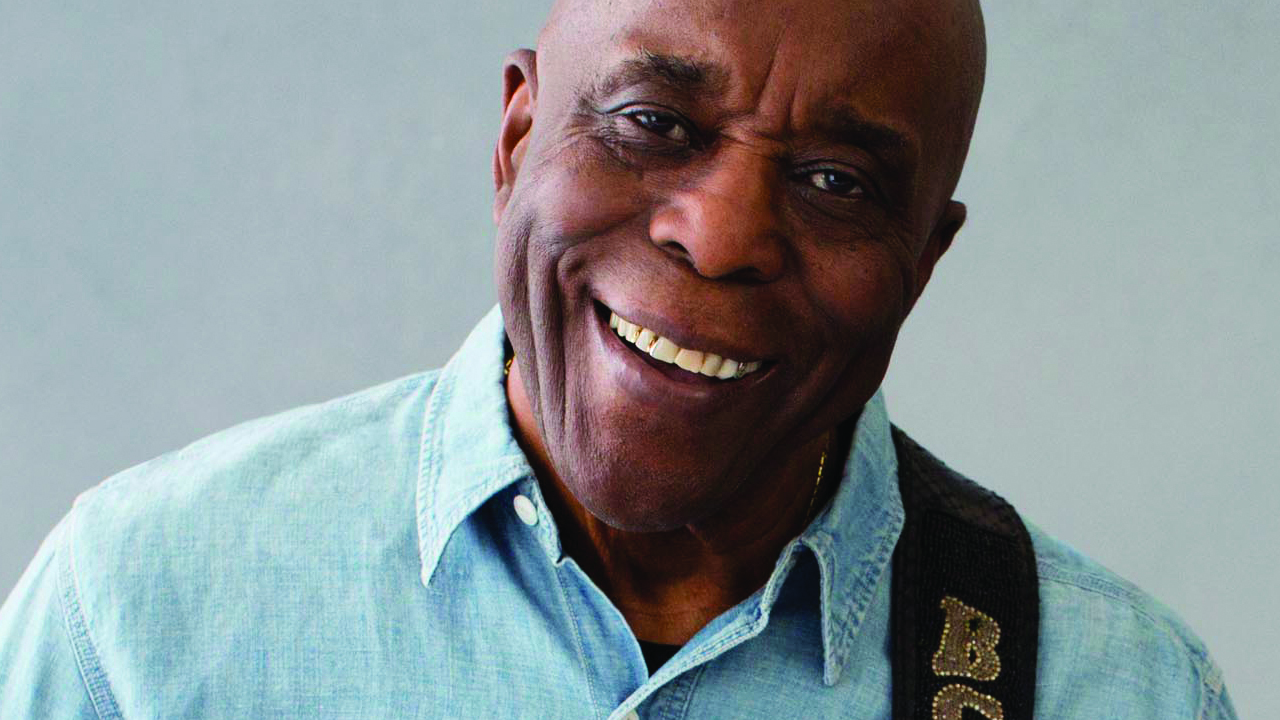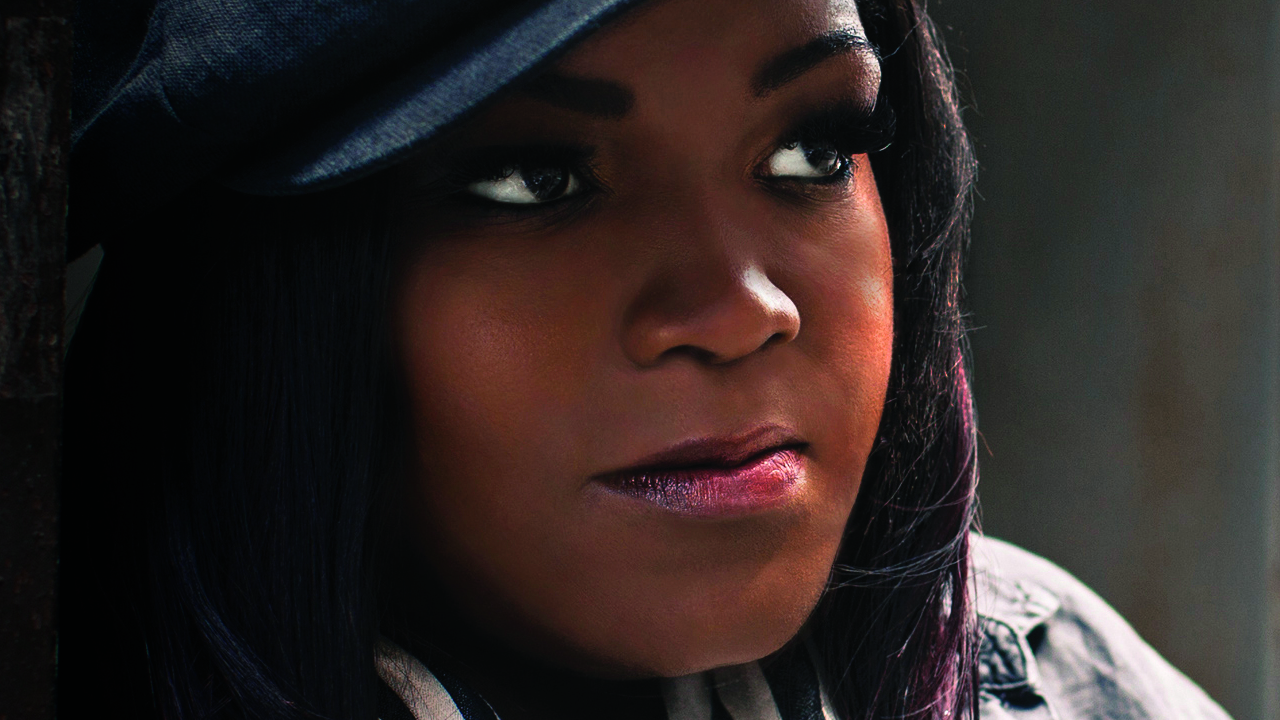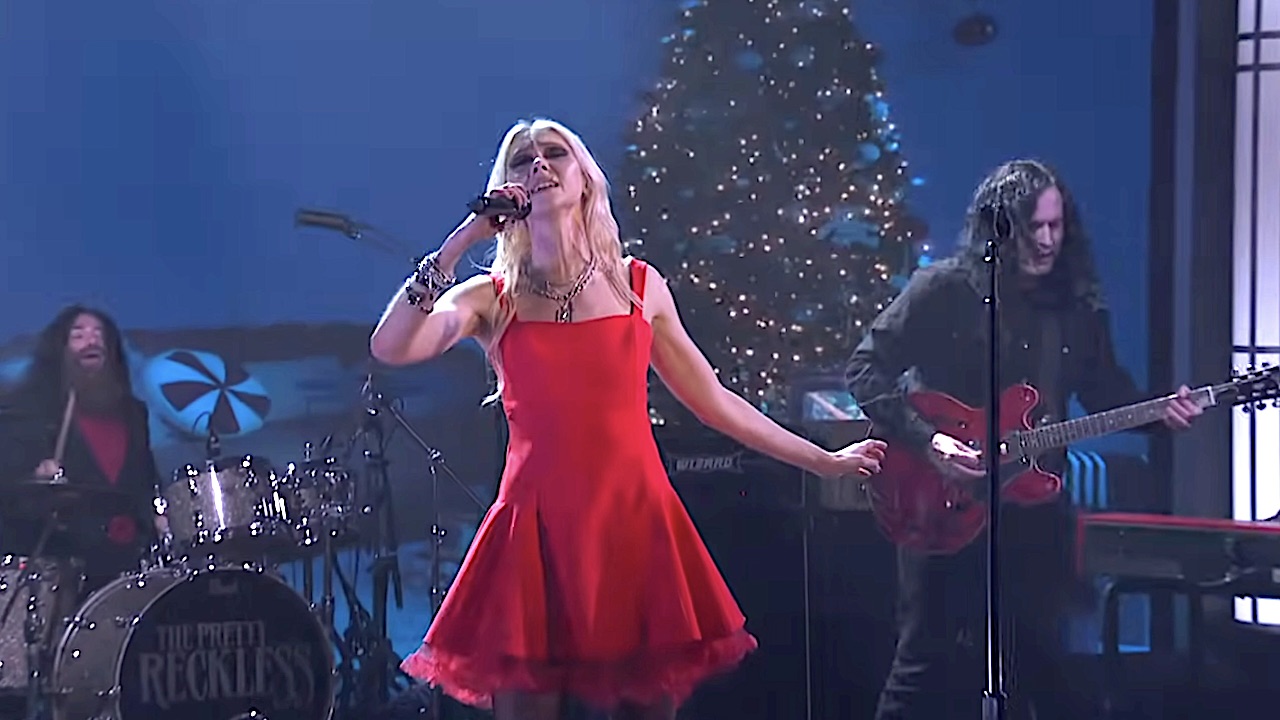The 100 Greatest Blues Singers
We asked you to vote for your favourite vocalists, and you made yourselves heard.
39) RL Burnside: The ultimate late bloomer of the blues.
Not many artists make it in their sixties, but that’s what happened to Delta bluesman RL Burnside after years of musical toil thanks to the 1992 documentary Deep Blues. Reinvigorated, Burnside’s treacle-rich voice entranced a new generation of listeners who discovered him through his collaboration with blues-punk artist Jon Spencer. DW
38) Van Morrison: The old curmudgeon we all love…
Van was one of the first Irish singers to perform blues, the first according to the interview he gave this magazine in 2015. “People thought you were a nutcase if you wanted to play blues…” he said, but he persevered and cut some iconic 45s with his band Them including Gloria.
His vocal style has developed over the years from an expressive bark to a deeper growl, but age has not diminished his ability to move audiences. “Singing is my profession,” he once said. “There is no plan B.” EM
37) Magic Sam: A master of soulful modern blues.
Magic Sam, born Samuel Gene Maghett in 1937, is a considerable vocal talent, capable of vast range and expression. It’s rooted in the Mississippi Delta, unsurprisingly, as he learned the blues from Muddy Waters records, but is also pure Chicago, his hometown since the age of 19. 1967’s West Side Soul, his debut album for Delmark, produced by Robert G Koestler, is his legacy, the mapping of the human condition through emotion and feeling and a blueprint for all modern blues to come. AC
36) Robert Cray: The smoothest operator in blues.
When the Robert Cray Band set out in 1974, the frontman was so shy, bassist Richard Cousins had to handle the banter. Yet it all clicked when Cray sang, in a honeyed tenor so poignant he was able to perform ballads in even the toughest bars. Cray at 62 still sounds smoother than a sandpapered silkworm. To hear his seductive croon at its finest, check out 1986’s Strong Persuader. HY
35) Lead Belly: The songster who introduced the blues to a white audience.
Huddie Ledbetter was not a straight blues singer, rather he was a “songster”, a human jukebox who sang folk music, the blues, children’s songs, prison work songs and field hollers, spirituals and gospel, becoming the embodiment of what is now known as Americana. His versatile voice was unusually resonant and powerful, helping him to stamp his identity on the songs in his repertoire. It could be haunting on Black Girl (Where Did You Sleep Last Night) and joyful on children’s song Sally Walker.
Perhaps the most significant person to be influenced by Lead Belly was Lonnie Donegan who adopted much of Lead Belly’s repertoire including Rock Island Line, his version kickstarting the skiffle movement and inspiring a generation of musicians to pick up guitars, including John Lennon and Paul McCartney. JH
Sign up below to get the latest from Classic Rock, plus exclusive special offers, direct to your inbox!
34) Ruth Brown: The woman who built Atlantic.
Brown’s 50s hits on Atlantic put the label on the map, and she was also one of the instigators of the Rhythm & Blues Foundation. Look up her duet with BB King on It Ain’t Nobody’s Business to see what a charismatic and gifted singer she was. EM
33) Otis Rush: From the church choir to Chicago’s west side.
Signed by the legendary Willie Dixon, Otis Rush shook the heavens with his soaring gospel-powered voice on his 1956 debut I Can’t Quit You Baby. While Rush’s career has been hampered by record label woes, if talent equalled success he’d be a superstar. 1976’s Right Place, Wrong Time is masterful. DW
32) Big Joe Turner: The king of blues shouters.
The quintessential blues shouter, Big Joe Turner boasted pipes mighty enough to crumble the walls of Jericho. He started singing in nightclubs aged 14 and cut his first record, Roll ’Em Pete, in 1938. He had a stint fronting Count Basie’s orchestra but struck gold after signing with Atlantic in 1951, leading to a succession of classics including Shake, Rattle And Roll, Honey Hush, Corrine Corrina, and Flip, Flop And Fly. Everyone from Elvis, Bill Haley and Jerry Lee Lewis to Brian Setzer covered his songs, but none match his power. DW
31) Bonnie Raitt: You’d like her when she’s angry.
Raitt admits her earliest vocals were a little green (“Not enough gravitas or experience to convey the depth of emotion I wanted to express”), but a few hard knocks changed that, and by 1991’s Luck Of The Draw, you felt her pain on benchmarks like I Can’t Make You Love Me. Few vocalists are better at licking their wounds, but Raitt is most magnetic when her claws are out on self-penned polemics like The Comin’ Round Is Going Through. “When you write a seething rocker like that,” she told us. “it sounds like you’re singing from hell.” HY
30) Buddy Guy: Nobody puts Buddy in the corner.
The flipside of Buddy Guy’s all-pervading guitar hero status is that plaudits for the veteran’s vocals are surprisingly thin on the ground. Upon his arrival in Chicago, he was mostly deployed by Chess as a sideman to heavyweights such as Howlin’ Wolf, which was plainly ridiculous, given that the few times he was put out front (on 1960’s label debut The First Time I Met The Blues, say, or 1967’s I Suffer With The Blues), his soul and expression were the equal of anyone. Even now, at 79, Guy’s voice remains his secret weapon – and it’s as devastating as ever. HY

29) Joe Bonamassa: It’s not all about the guitars you know.
Yeah, he can play a bit – but Joe Bonamassa’s molten guitar chops have stolen the column inches from his great unsung trump-card. The man himself would doubtless brush off plaudits for his singing: even now, he still takes lessons, and admitted to finding it “daunting” performing Howlin’ Wolf songs at 2014’s Muddy Wolf shows. The fact remains, that sleeve-muttering interviewee morphs each night into a monster vocalist, with expression, soul and the brute power to roar it up with the best of them.
That was never the plan. The congenital guitar nerd became a singer by default, following the split of his early 90s outfit Bloodline. “I had to make a decision,” he told the Guitar Gods & Masterpieces website. “Do I want to play instrumentals? Do I want to play in a band with a singer? I decided to sing out of self-preservation. I was ready for the beatdown, bracing myself for the critics to say: ‘He’s got a bad voice.’ But everyone said they liked it. So it was like, ‘Okay, I’ll keep going…’”
He’s kept improving, too. The frontman remembers his early approach to vocals being “a shot of whiskey, a cigar and shout in key” (while producer Kevin Shirley recalls him storming out of Sloe Gin sessions after being asked to sing a low harmony on Seagull). But listen to recent studio highlights – the explosive ‘lifting me up, tearing me down’ sections from Dust Bowl, perhaps, or the echo-clad a capella from Oh Beautiful! – and you’ll realise those mighty pipes deserve equal billing to the mythologised fingers. HY
28) Taj Mahal: One giant step for blues-kind.
Taj Mahal built his reputation with three albums in the late 60s – his eponymous debut, The Natch’l Blues and Giant Step – steeped in traditional blues. He has since experimented with adding all manner of globally diverse influences, but that rich, gruff voice is pure blues. DW
27) Chuck Berry: The man who invented the Stones…
Much is made of Muddy Waters and Howlin’ Wolf’s adoption by white kids in the 1960s. Well, their Chess labelmate Chuck Berry had that youth vote sewn up in the 1950s thanks to his supercharged rhythm and blues (Maybellene, Johnny B Goode, No Particular Place To Go) bursting with exuberant vocal chops and lyrics that connected with teenagers everywhere. EM
26) Jimmy Reed: The big boss man of blues singers.
One of the big players on America’s post-war blues scene, Reed helped pave the way for Elvis Presley, Jerry Lee Lewis and Johnny Cash, as well as influence British musicians such as The Rolling Stones.
At times, his singing style was so casual, it was practically horizontal, but Reed had a knack of making it all look and sound so effortless. Some of his songs, like Ain’t That Loving You Baby and Shame, Shame, Shame are still regularly covered today, but if you want to hear a master bluesman and his craft, check out the originals. JHai
25) T-Bone Walker: He made BB King want to sing the blues. ’Nuff said.
One of the most influential bluesmen of his generation, Walker inspired everyone from Jimi Hendrix to Stevie Ray Vaughan. Walker could belt them out like the rest of them, as he proved on Everyday I Have The Blues, or bring it back home on one of the great blues songs of all time Stormy Monday, which, of course he also wrote. And no less an authority than BB King once said it was T-Bone Walker who “really started me to want to play the blues”. We can’t say fairer than that. JHai
24) Mamie Smith: The larynx that made history and started it all…
She’s not as famous in modern times as her contemporary, Bessie Smith, but Mamie made history as the first African-American artist to cut a commercial blues record. In that sense, she can be considered the true mother of the blues. Released in 1920, her debut Crazy Blues ignited the trend for female domination of the recording industry that lasted 10 years and made stars of Bessie, Ma Rainey and Alberta Hunter. With her heartfelt trill and music hall tale of a woman left lonely, it epitomises the style of its era. EM
23) Shemekia Copeland: Born to sing the blues.
For Copeland, the die was cast early. “I swear,” she laughed of her blues-blooded genealogy, “I was in my mother’s arms on my way home from the hospital when my father [Texas blues icon Johnny Copeland] said, ‘She’s going to be a blues singer.’ There was no question for him.”
Not many eight-year-olds have the pipes to win over Harlem’s Cotton Club, and since that baptism of fire, there’s been no stopping Copeland. Right from the start, that voice could pin punters to the back wall, but her vocals have grown more expressive with life. “You’re limited to what you can sing about at 18,” Copeland told us. “Through ageing and growing, I’ve lived a little and seen a lot, and I want to talk about it.”
Stick a pin in Copeland’s catalogue and you’ll find great performances: try the playful stomp of Can’t Let Go or the scratch-your-eyes-out soul of Better Not Touch. But it’s 2015’s Outskirts Of Love that best showcases her abilities. Over a fusion of blues, country and gospel, she gives it both barrels, on themes from homelessness (Cardboard Box) to date-rape (Crossbone Beach). All the best vocalists are storytellers – and Copeland leaves us rapt. “I want to have something to say,” she told The Blues. “I won’t just put out a bunch of songs.” HY

22) Sister Rosetta Tharpe: The original soul sister with a one-of-a-kind mezzo soprano voice.
Her achievements – one of the first to play electric guitar in church, and to cross over from church to secular – detract from her extraordinary vocal and earthy takes on Rock Me, Didn’t It Rain and This Train. AC
21) Lee Brilleaux: The wolf of Canvey Island…
Essex boys Dr Feelgood looked like four villains in an episode of The Sweeney, and frontman Brilleaux increased the element of danger with a mean and moody onstage persona, Howlin’ Wolf vocals and a grubby white suit. The ’75 debut album, Down By The Jetty, captures devastating R&B and a singer with proper X-factor, years before that became a derogatory term. EM
20) Beth Hart: Heart and soul on her sleeve.
There’s no match for a vocal with life experience, and when Beth Hart sings, that scorched battle cry evokes a backstory marked by drugs, destitution and mental disorder. She’s been pipes-for-hire on Slash’s Mother Maria, Jeff Beck’s choice for live work and Joe Bonamassa’s on/off mouthpiece since 2011, but her vocal cuts deepest on self-penned moments like Mechanical Heart. The only person who’s untouched is Hart herself: “Whenever I make an album, I always think I sang it poorly. I’m disappointed with myself.” HY
Current page: The 100 Greatest Blues Singers (39-20)
Prev Page The 100 Greatest Blues Singers (59-40) Next Page The 100 Greatest Blues Singers (19-1)